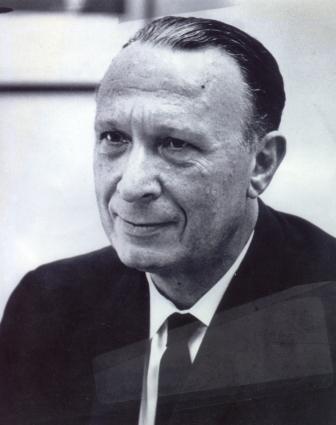Katzir founded the Institute’s Department of Polymers and headed it until his assassination. In his scientific research, he strove to understand the basic processes of life. He chose to study the function of large synthetic molecules, particularly those whose behavior could shed light on major phenomena in living systems. This research led him to the new field of mechanochemistry, which addressed the conversion of chemical energy into mechanical energy, much like the processes taking place in our muscles. Katzir received worldwide recognition for his work in this field.
In Israel, alongside his basic research, Katzir helped to found numerous institutions that today form an inseparable part of Israel’s intellectual life. He founded the Israel Academy of Sciences and Humanities and served as its president for six years, until his death. Among others, he was instrumental in the creation of Ben-Gurion University of the Negev, the Van Leer Jerusalem Institute and the Feinberg Graduate School at the Weizmann Institute.
Katzir pioneered the popularization of science in Israel. His World of Science popular lectures on the radio drew enthusiastic listeners. A charismatic teacher, he trained hundreds of students. According to Kedem, his Ph.D. students felt as if they were being inducted into the temple of science. When he visited the Soviet Union in the late 1950s, it was the only time that a lecture by a foreign visitor at the University of Moscow had to be transferred to a larger hall.
In May 1972, Katzir was on his way home after attending several conferences in Europe, including a German-Israeli meeting on membranes he had organized in Göttingen with Prof. Manfred Eigen, Nobel laureate in chemistry. At Ben-Gurion Airport, he and other passengers were attacked by Japanese terrorists. About 100 people were wounded in the shooting; 24 of them died, including Katzir.
Few people know that in his youth, Katzir had seriously considered becoming a poet and was a member of the Eretz-Israel Mandolin Orchestra. His wide-ranging interests encompassed, among numerous others, Judaism, literature, philosophy of science, theories of morality, education and information theory. Prof. Shneior Lifson, his former student, called him “a poet of science.”
Prof. Katzir’s life and work is commemorated in Israel and abroad. At the Weizmann Institute, the Aharon Katzir-Katchalsky Center furthers international scientific cooperation through conferences and the exchange of scientists. “Of particular concern to the Center is the impact of scientific and technological advances on human society,” says its mission statement. All three of Katzir’s children chose to follow in his scientific footsteps: Abraham Katzir, a physicist; Yael Katzir, an anthropologist; and Gadi Katzir, a marine biologist.
Special thanks to Orna Zeltzer, Weizmann Institute Archive.


